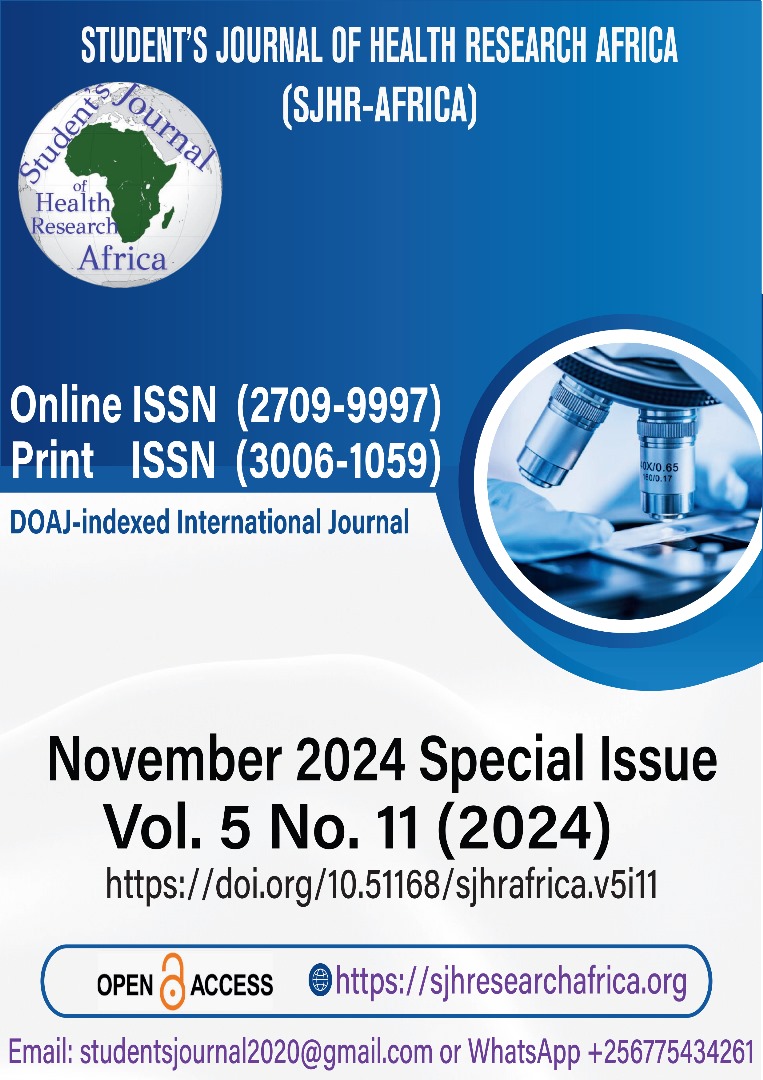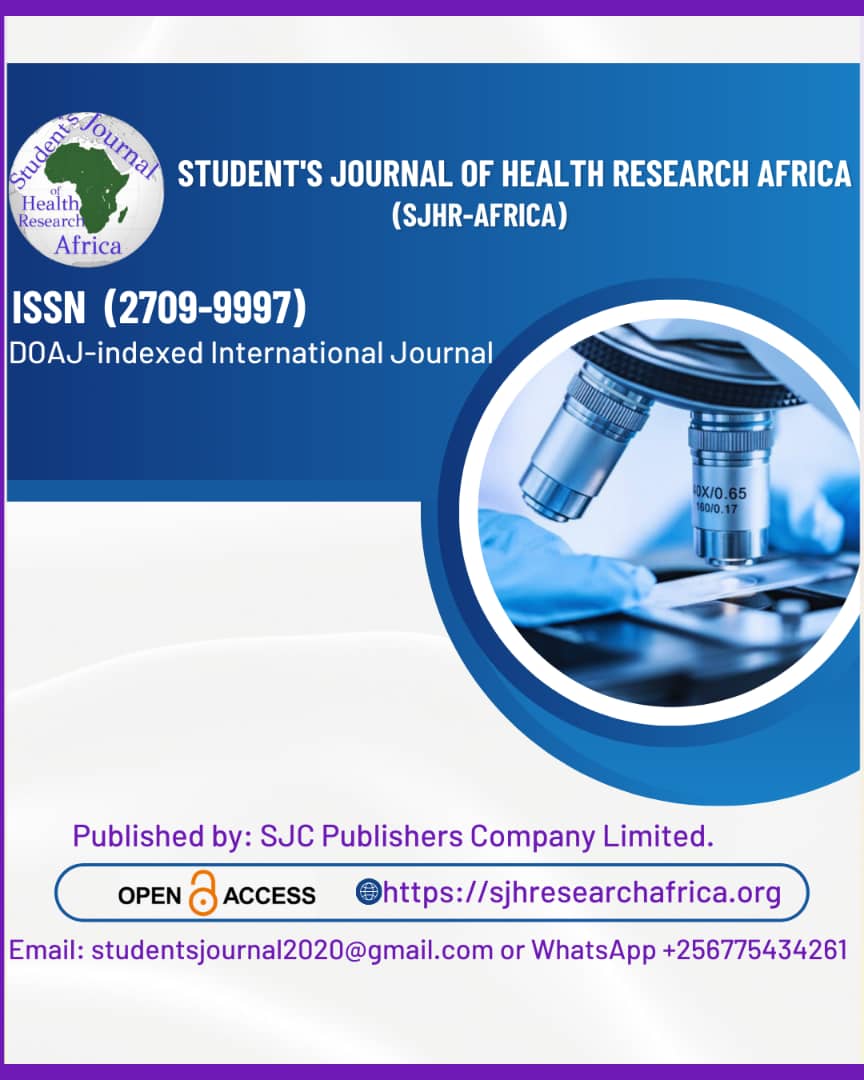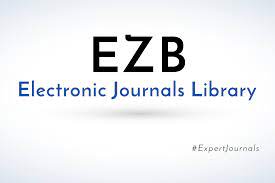COMPARISON OF HEMODYNAMIC CHANGES IN THORACIC SEGMENTAL SPINAL ANAESTHESIA AND GENERAL ANAESTHESIA FOR LAPAROSCOPIC CHOLECYSTECTOMY
DOI:
https://doi.org/10.51168/sjhrafrica.v5i11.1750Keywords:
Thoracic spinal anaesthesia, general anaesthesia, laparoscopic cholecystectomy, hemodynamic changes, MAP, HR, segmental block, postoperative nausea, anaesthesia comparisonAbstract
Background
Laparoscopic cholecystectomy is the standard surgical procedure for symptomatic gallstone disease, typically performed under general anesthesia. Increasing evidence suggests that thoracic segmental spinal anesthesia (TSSA) improves perioperative hemodynamic stability and reduces postoperative complications. Therapeutically, comparing the physiological effects of both methods on intraoperative and postoperative hemodynamic measures is important.
Objective: to compare the hemodynamic effects of thoracic segmental spinal anesthesia to general anesthesia in laparoscopic cholecystectomy patients. Secondary outcomes include analgesic requirements, nausea/vomiting, and recovery profile.
Methods
A 13-month prospective, comparative research study at Patna Medical College & Hospital involved 107 adult patients undergoing elective laparoscopic cholecystectomy. Patients were randomly assigned to two groups: A (n=53) had thoracic segmental spinal anesthesia (TSSA), while B (n=54) received general anesthesia. At regular intervals, hemodynamic parameters like HR, MAP, and SpO₂ were recorded during and after the procedure. Analgesics, recovery time, and side effects like nausea and hypotension were recorded.
Results
Compared to GA, TSSA resulted in more stable hemodynamic parameters, with significantly reduced MAP and HR oscillations (p < 0.05). TSSA patients needed fewer intraoperative analgesics, recovered faster, and had less postoperative nausea and vomiting. TSSA had more hypotension early in surgery, but vasopressors controlled it. No high spinal block or neurological sequelae were observed.
Conclusion
Thoracic segmental spinal anesthesia offers a safe and effective alternative to general anesthesia for laparoscopic cholecystectomy, resulting in improved hemodynamic stability, reduced perioperative complications, and faster recovery. TSSA is beneficial for those at risk of general anesthesia.
References
Imbelloni, L. E., Fornasari, M., Fialho, J. C., Cordeiro, J. A., & Sant’Anna, R. (2010). General anaesthesia versus spinal anaesthesia for laparoscopic cholecystectomy. Revista Brasileira de Anestesiologia, 60(3), 217–224.
Karacaer, F., Tercan, M., Yilmaz, G., & Arslan, M. (2019). Thoracic segmental spinal anaesthesia for laparoscopic cholecystectomy: A randomized prospective trial. BMC Anesthesiology, 19(1), 186.
Atallah, M. M., Shorrab, A. A., & Abdel Rahman, M. S. (2006). Thoracic spinal anesthesia: Is it a safe alternative to general anesthesia for laparoscopic cholecystectomy? Acta Anaesthesiologica Scandinavica, 50(7), 874–878.
van Zundert, A. A., & Paterson, B. (2006). Segmental spinal anaesthesia for cholecystectomy: Case report. Anaesthesia and Intensive Care, 34(6), 833–837.
Hamad, M. A., & Abdelrahman, K. G. (2009). Spinal versus general anesthesia for laparoscopic cholecystectomy: A comparative study. Egyptian Journal of Anaesthesia, 25(2), 111–115.
Shroff, P., & Thomas, R. (2021). Evaluation of postoperative recovery and complications in patients undergoing laparoscopic surgeries under general and regional anaesthesia: A prospective observational study. Journal of Clinical and Diagnostic Research, 15(2), UC01–UC05.
Mehta, A., & Jain, K. (2018). Thoracic spinal anaesthesia: Emerging trends and safety considerations. Indian Journal of Anaesthesia, 62(8), 588–593.
Girdhar, K. K., & Mahajan, R. (2017). Haemodynamic changes and efficacy of thoracic spinal anaesthesia in laparoscopic abdominal surgeries. Anaesthesia, Pain & Intensive Care, 21(3), 305–311.
Lirk, P., Colvin, J., & Bonnet, M. P. (2015). Regional anaesthesia in laparoscopic surgery. Current Opinion in Anaesthesiology, 28(5), 538–545
Downloads
Published
How to Cite
Issue
Section
License
Copyright (c) 2024 Niraj Kumar, Neeraj, Sudama Prasad, Rakesh Kumar

This work is licensed under a Creative Commons Attribution-NonCommercial-NoDerivatives 4.0 International License.






















